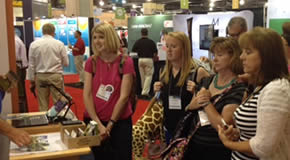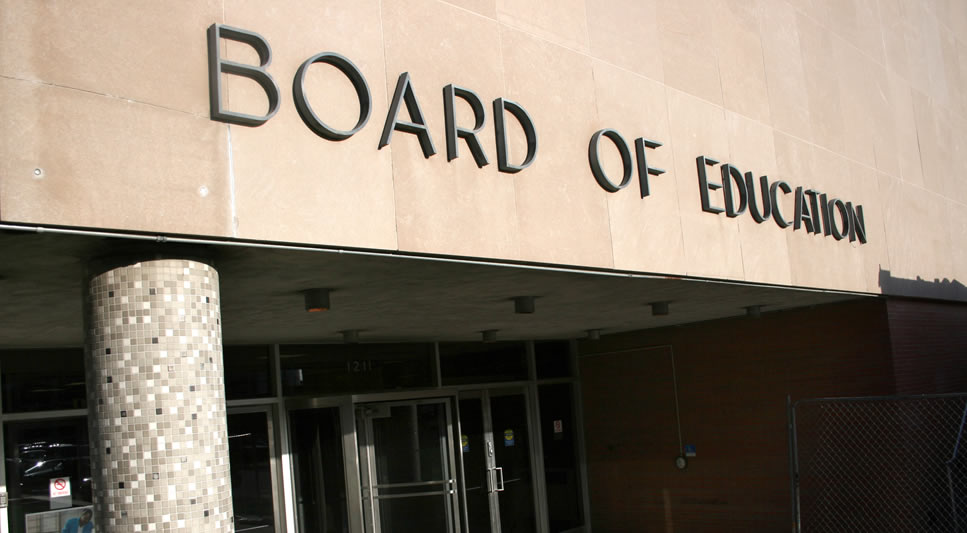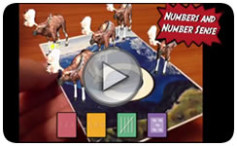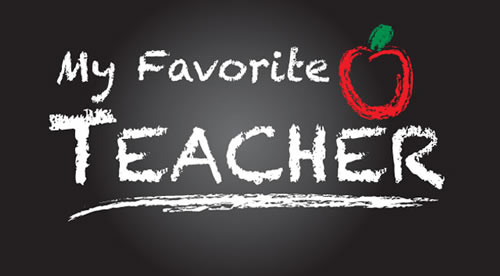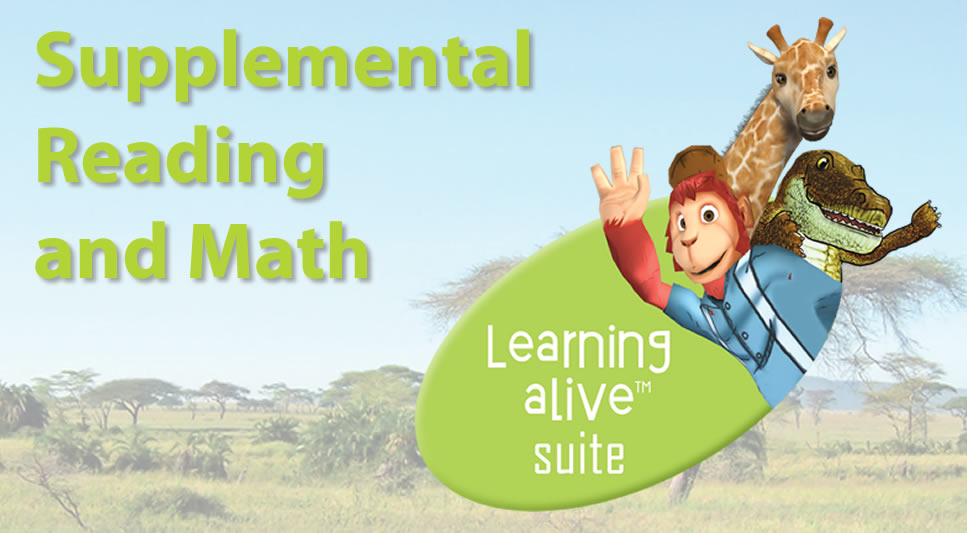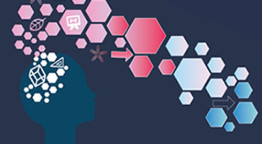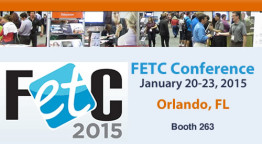Barbara Kookogey, PreK-K Director
Michelle Luthman, Special Needs Teacher
Audra Cervi, Reading Specialist
Amy Crook, Kindergarten Teacher
Jane Brittel, Principal
Volume Bonus for School Districts
Below is a recent Press Release announcing our Proficient by 3rd Grade District Level Volume Bonus Program:
Alive Studios Helps School Districts Win the Reading Challenges for At Risk Students
Alive Studios is introducing a Proficient by 3rd Grade Volume Bonus program for school districts to test and prove the Letters alive early learning reading program.
Alive Studios has structured a program that allows school districts to test and prove the effectiveness of teaching with Letters alive within eight classrooms. “We encourage districts to test and compare student outcomes between classes using Letters alive and those not using Letters alive.” stated Cynthia B. Kaye, CEO and Chief Zoo Keeper of Alive Studios. The volume program comes with a full-year of free online digital assessments for measuring, tracking, and reporting the progression of students. The generated reports can be shared with teachers, principals, and even parents in English or Spanish. The Alive Studios’ team will also come on-site and trains the participating teachers how to most effectively use Letters alive with their students and how to track their outcomes. Says Kaye, “We’re convinced that once districts try the bonus program and see the results for themselves they’ll want to make this available to all their at risk students.”
“We’ve been busy spreading awareness of our game-changing supplemental reading program, Letters alive, by introducing it to teachers around the country.” added Kaye. “What we’re finding at trade shows and during demos is that teachers love our solutions, but 74% of them don’t have the purchasing authority to obtain it. We realized we needed to take our solutions to the district level.”
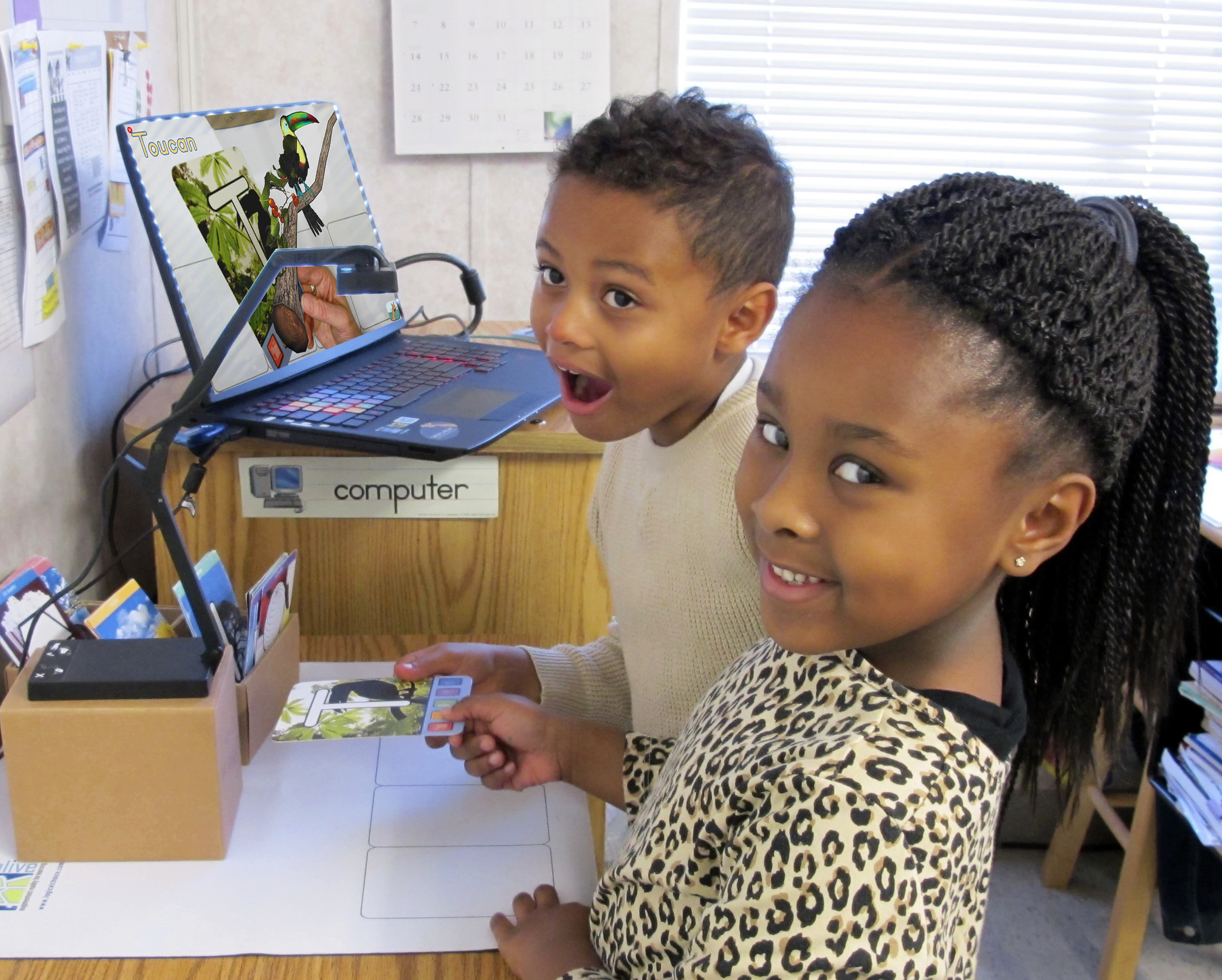 America has a literacy crisis among our early learners and serious solutions are in demand. “An alarming number of children—about 67 percent nationwide and more than 80 percent of those from low-income families—are not proficient readers by the end of third grade. This has significant and long-term consequences not only for each of those children but for their communities, and for our nation as a whole,” cited Ralph Smith, Managing Director of The Campaign for Grade-Level Reading.
America has a literacy crisis among our early learners and serious solutions are in demand. “An alarming number of children—about 67 percent nationwide and more than 80 percent of those from low-income families—are not proficient readers by the end of third grade. This has significant and long-term consequences not only for each of those children but for their communities, and for our nation as a whole,” cited Ralph Smith, Managing Director of The Campaign for Grade-Level Reading.
With almost 7 out of 10 students not proficient in reading by 3rd grade, early intervention with a proven solution is crucial for establishing the foundations for high school graduation and career success. Alive Studios’ difference maker is a mind-boggling technology called Augmented Reality. It creates a 3D experience without glasses and provides off-the-charts engagement that increase student outcomes. Now, over 1,500 classrooms are learning letters, letter sounds, sight words and sentence building in a revolutionary way.
The program is especially effective with At Risk students including ELL, ESL and Special Needs. Independent Research has proven a 48% increase in letter naming fluencies and 112% increase in letter sound fluencies by implementing Letters alive in the classroom. “My students love seeing a new animal each day and their reactions to the animals coming to life is priceless! Letters alive brings a whole new engagement level to our ABC BOOTCAMP!” stated Greg Smedley-Warren, Kindergarten Teacher at JE Moss Elementary, a Title I school in Nashville, Tennessee.
The Proficient by 3rd Grade Volume Bonus Program is available to any school district. Interested teachers and principals are encouraged to inform their district leaders about the program. Details about Letters alive and the bonus program can be found here.
ABC World News
Letters/Math alive Now on DonorsChoose
The wait is finally over! One of the common questions we receive after teachers fall in love with our software is “Are Letters alive and Math alive on DonorsChoose.org?” Now, we can answer with an enthusiastic, “Yes!”
Thanks to our friends at Kaplan Early Learning Company, our reading and math learning kits are now posted amongst the other great products offered through this popular funding organization. Letters alive, Math alive, and Learning alive are now available in Mac or Windows versions on the DonorsChoose.org website.
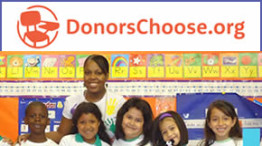 DonorsChoose.org makes it easy for anyone to help a classroom in need. Public school teachers from every corner of America create classroom project requests, and donors can give any amount to the project that inspires them. Teachers simply post their need and the product they wish to have, and donors can choose to make donations to fund the project. According to their website, over 70% of projects get funded. Periodically, Bill and Melinda Gates offer a matching program where they match any project donation.
DonorsChoose.org makes it easy for anyone to help a classroom in need. Public school teachers from every corner of America create classroom project requests, and donors can give any amount to the project that inspires them. Teachers simply post their need and the product they wish to have, and donors can choose to make donations to fund the project. According to their website, over 70% of projects get funded. Periodically, Bill and Melinda Gates offer a matching program where they match any project donation.

In an effort to help teachers post their stories and projects, we have created a funding section on our site to make it as easy as possible to post your project and seek funding for our products.
Content is King for Classroom Technology
So, after a long wait and a lot of pleading you finally got that new computer, or that new smartboard. Now what? Do you have the really cool content you need to engage students?
As we make the trade show tour, we have the pleasure of seeing all the latest educational technology; fast, streamlined computers and big, crystal-clear displays. Like kids in a candy store glaring at the shiniest and most colorful lollypop, we all fall into the “I have to have this” category. But when we get it into our classrooms, we realize it doesn’t solve any of the major problems we face with early learners. Are they now learning letter sounds and letter naming more effectively? Does the new tech reach both ends of the learning spectrum? Are At Risk students now achieving better results? Can ELL students grasp the English language any quicker?
One common void we discover amongst the hardware tech crowd is the lack of content.  Sure they offer the ability to do “it” quicker, bigger, and with more wow.. but do what? It’s the content ON the device that makes the difference. It’s the software application that brings the device to life and solves problems in classrooms.
Sure they offer the ability to do “it” quicker, bigger, and with more wow.. but do what? It’s the content ON the device that makes the difference. It’s the software application that brings the device to life and solves problems in classrooms.
It reminds me of a story about a little boy who had a $5 bill and wanted to buy a wallet. After shopping several stores, he found the perfect one. It fit his pocket, it felt good in his hand, and it only costed $5. You can guess the rest of the story. Having spent his $5, the little boy had nothing to put into his new wallet. Just like the wallet with no money, a new computer or smartboard just isn’t that impressive without content.
So, if you’re given the green light for new technology, remember to save some funds for engaging content that will help make a positive difference in your classroom.
ISTE Never Fails to Deliver
As a startup technology company within the education market, it’s crucial for Alive Studios to be selective with our marketing dollars. Our mission is to provide teachers with cool technology that helps early learners become proficient in reading and math by the third grade. So, our marketing budget is targeted to areas in which we can deliver that message to as many decision makers as possible. This year, we made our second trip to an ISTE Expo as an exhibitor; and for a second consecutive year, ISTE has delivered by putting us in front of some great contacts.
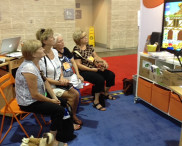 The traffic seems non-stop at the shows and the attendees are always hungry for the latest technology trends in education. This, of course, is right up our ally since we are the world’s first company to develop an full-year, early education, supplemental curriculum using augmented reality technology. Our small booth size is compensated for by our 3D animated animal characters bellowing out of our sound system, which makes it tough for passers by to not be drawn into the curiosity zone.
The traffic seems non-stop at the shows and the attendees are always hungry for the latest technology trends in education. This, of course, is right up our ally since we are the world’s first company to develop an full-year, early education, supplemental curriculum using augmented reality technology. Our small booth size is compensated for by our 3D animated animal characters bellowing out of our sound system, which makes it tough for passers by to not be drawn into the curiosity zone.
ISTE not only provides us an excellent outlet to reach multitudes of tech-hungry prospects for our reading and math solutions, we also find ourselves meeting key B2B vendors that compliment our business. We have struck several relationships from hardware, to book publishing, to live streaming on the internet. Also, as we become more integrated into the exhibitor family, we enjoy seeing old friends and helping each other through our network of contacts.
One of our biggest attention-getters is our $795 Giveaway for a full Letters alive Kit! 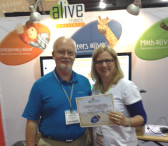 We hold a drawing, which is open to all attendees who enter their names. On the last day of the show, we draw quite a crowd as we announce the winner.
We hold a drawing, which is open to all attendees who enter their names. On the last day of the show, we draw quite a crowd as we announce the winner.
We are already looking forward to the ISTE Expo for 2016 and will be spending some time throughout the rest of this year nurturing the business relationships we’ve started.
The $10,000 per Student Question for School Districts
Several studies argue about whether repeating a grade is helpful or harmful to students; yet few studies discuss prevention by developing readiness.
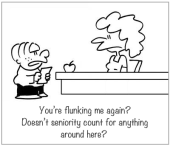 According to the National Center for Educational Statistics, retaining a child can result in bullying or victimization and increase the likelihood of dropping out of school before graduation. This fact, coupled with the exorbitant costs associated with repeating a grade, prompted us to dig into a solution. Nationally, the majority of retention decisions are among Kindergarten and First Graders with reading proficiency being cited as the number one measurement. The greatest contributors to the reduction in retention rates over the last decade has been the lowering of the standards bar and avoidance-based promotions aimed at preventing the negative results that may occur from retention. Unfortunately, few schools are focusing on actually increasing literacy as a means of decreasing retention rates.
According to the National Center for Educational Statistics, retaining a child can result in bullying or victimization and increase the likelihood of dropping out of school before graduation. This fact, coupled with the exorbitant costs associated with repeating a grade, prompted us to dig into a solution. Nationally, the majority of retention decisions are among Kindergarten and First Graders with reading proficiency being cited as the number one measurement. The greatest contributors to the reduction in retention rates over the last decade has been the lowering of the standards bar and avoidance-based promotions aimed at preventing the negative results that may occur from retention. Unfortunately, few schools are focusing on actually increasing literacy as a means of decreasing retention rates.
The national average cost for retaining a student is $10,700 according to the latest statistics. The direct cost to society of retaining 2.3 percent of the 50 million students enrolled in American schools exceeds $12 billion annually. Kindergarteners and 1st graders combine to make up roughly 25% of the overall total. This cost, coupled with the data from studies showing the negative consequences of retention, can cause school districts to extend unwarranted promotion that ultimately contributes to America’s dismal illiteracy and dropout rates. Considering the fact that preventing one single student from retention could save a district $10,000 in extra expenses, it doesn’t take long to realize addressing reading proficiency needs to take a higher priority among curriculum decision makers. This proactive approach during early ages can have a measurable, positive impact on the overall education system.
States vary with their standards and definitions for “readiness” and “proficiency” and the corresponding actions they pursue. Florida and New York have instituted so-called “Promotion Gates” that include early testing and standards to help identify those students in need of additional attention. The introduction and implementation of No Child Left Behind in 2001 also prompted schools to take a fresh look at exposing readiness by testing at critical transitionary stages throughout the educational grade system. However, awareness is only part of the story. Determining the root issues that contribute to illiteracy and providing solutions that address those root issues make up the silver bullet the educational system has been missing. Two major contributors to the shortcomings in our students’ reading proficiencies include: 1. Lack of student engagement in the activities and lessons presented in the selected curriculum, and 2. Absence of key teaching modalities within curriculums aimed at communicating with students who have various learning styles and skills.
The results of a study being conducted by the University of West Georgia will be released in July 2015. This Independent Research studied the effects of teaching early literacy with Augmented Reality, a type of 3D technology that adds virtual reality components to a real world experience. The study was conducted in Kindergarten classes within a Title 1 school. Augmented Reality technology has been tried and proven in other industries such as medical, aviation, and even the US military; but its application and successes within an educational curriculum is only recently emerging.
Curriculum developers using Augmented Reality are among the pioneers who are facing the challenges of illiteracy head on. District-level decision makers who wish to address the costs associated with retaining young students would serve themselves well to consider implementing an Augmented Reality based, supplemental reading solution into their PreK to 3rd grade classrooms. The costs associated with adding such a program are far less than the $10,000 per student expense that is incurred by repeating a grade.
 Cynthia B. Kaye
Cynthia B. Kaye
CEO | Chief Zoo Keeper
Atlanta, GA
Website: www.AliveStudiosCo.com
Twitter: @alivestudiosk12
Augmented Reality Early Literacy Program for Apple Macs
 Alive Studios is introducing the Mac version of its Augmented Reality early literacy software program at the ISTE Expo in Philadelphia, PA. This product release is expected to be welcomed by School Districts who use Mac Technologies exclusively.
Alive Studios is introducing the Mac version of its Augmented Reality early literacy software program at the ISTE Expo in Philadelphia, PA. This product release is expected to be welcomed by School Districts who use Mac Technologies exclusively.
Letters alive, a supplementary reading software program for 3-8 year olds, will be available for Mac users with OS 10.6 or better. This program includes the world’s first full-year curriculum ever written for early education using Augmented Reality. “Early learners will be taught letters, words, and sentences while being fully engaged by the mind-blowing visual effects of Augmented Reality,” stated Janice Sinclair, Principal at Gerard Prep School and user of the software. Letters alive has 26 animated animals representing the letters of the alphabet that come to life with amazing 3D effects and help students through all the learning activities.
With Apple’s recent purchase of Metaio, a German company making Augmented Reality software, all eyes are on what Apple’s next moves will be. The possibilities are limitless. Augmented Reality technology is already successfully being utilized in the medical, aviation, and entertainment industries. However, Letters alive is one of a small handful of products that has launched in the early education space.
“The PC version of Letters alive has been available for over three years and is currently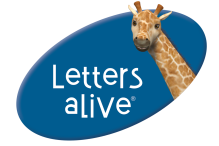 being used in more than 1,000 classrooms around the world. Its low cost and ease of use has made it very popular among schools looking to use technology to fight early literacy problems,” stated Cynthia B. Kaye, CEO (and Chief Zoo Keeper) of Alive Studios. Independent research has proven the effectiveness of using Augmented Reality in an educational program. Kids who were taught with Letters alive realized a 48% increase in letter naming fluency and a 112% increase in letter sound fluency over students not using the Augmented Reality software. More successful results will be released this July from another study using Letters alive with At Risk students.
being used in more than 1,000 classrooms around the world. Its low cost and ease of use has made it very popular among schools looking to use technology to fight early literacy problems,” stated Cynthia B. Kaye, CEO (and Chief Zoo Keeper) of Alive Studios. Independent research has proven the effectiveness of using Augmented Reality in an educational program. Kids who were taught with Letters alive realized a 48% increase in letter naming fluency and a 112% increase in letter sound fluency over students not using the Augmented Reality software. More successful results will be released this July from another study using Letters alive with At Risk students.
The release of Letters alive for Mac at the ISTE Expo on June 28 is sure to draw favorable attention with several school districts around the country using Macintosh computers exclusively. “Until now, their younger grades have not had an opportunity to experience Augmented Reality in their literacy programs,“ added Kaye. Alive Studios, the developer of Letters alive, also introduced Math alive earlier this year for PC’s and Mac’s. Math alive is a game-based supplemental math program for 3-8 year olds that features Metaio’s Augmented Reality technology along with 45 skill-based games that provide instant feedback to students.
Product Availability
Alive Studios will begin shipping the Mac version of Letters alive in July 2015. The products are the first of their kind within a full-year curriculum utilizing Augmented Reality for early learners.
Will Your Summer Program Prevent the Summer Slide?
Some experts say early learners lose up to two years of knowledge retention through the summer months. Make it a summer to remember with our fun, engaging programs for reading and math!
Consider adding Letters alive and/or Math alive to your Summer Curriculum:
Imagine teaching Reading like this: (90-sec video)
Or, teaching Math like this: (2-min video)
Will your Summer Program prevent the Summer Slide? Our engaging software solutions are as exciting as field trips and slip-n-slides! ;P
Are We Hamsters on the Wheel of Illiteracy?
We see it in our inboxes. We read it in our news articles. We can Google it and find countless studies and blog entries. The issue isn’t awareness any longer, the issue is how are we going to address our country’s literacy problem. Like hamsters on a wheel, this summer could mark the beginning of the United States’ 11th year with unchanged illiteracy rates.
For the record and to springboard into a discussion about solutions, let’s recap some dismal US literacy facts:
- 67% of students are not proficient in reading by the end of 3rd grade.
- Students who are not proficient by the end of 4th grade are 66% more likely to wind up on welfare or in prison.
- Students who don’t read proficiently by the 3rd grade are 4 times likelier to drop out of school.
- Students who are retained to repeat a grade will cost a District an average of $10,000 each.
- The US illiteracy rate hasn’t changed in 10 years.
- 85% of all juveniles who interface with the juvenile court system are functionally illiterate.
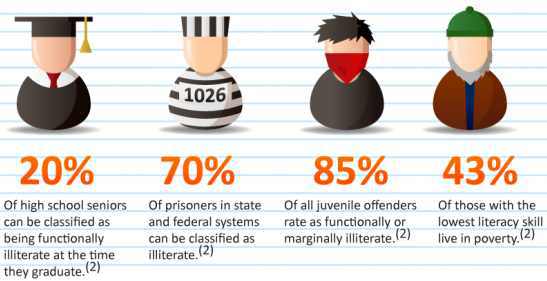
Prior to fourth grade, our educational system’s literacy plan is about learning to read; from that point, it’s about reading to learn. The basic system doesn’t cater well to deviations. Therefore, we have a countless supply of data around the failures. However, we do not offer many solutions to the crisis.
Unless you have lived under a rock, or have spent the last five years on your own private island playing Naked and Afraid, you know these stats about the lack of reading proficiency among our early learners and what the consequences are if not addressed. What you may not have heard is there’s a growing tribe of solution seekers looking for answers to the problem.
America has a plentiful supply of entrepreneurs hungering to invent the next widget that successfully resolves a problem; but not many who are aggressively pursuing the literacy crisis. Educators are increasingly looking for actions they can take in PreK to 1st grade as a proactive measure against failing academic and social futures; yet, they’ve been stifled by lack of funding, lack of solutions, and lack of proven curriculum.
 It’s hard to solve any issue without finding, defining, and exposing the root of the problem. Teachers commonly cite student engagement as a major contributor to not learning and not retaining the presented information. In their personal lives, today’s children are exposed to so many neurological stimulants in an average day that a typical classroom curriculum simply doesn’t hold their attention. Therefore with low engagement, learning is hindered and retention of information is minimal. Studies show that the average attention span is now around eight seconds – and that is for adults.
It’s hard to solve any issue without finding, defining, and exposing the root of the problem. Teachers commonly cite student engagement as a major contributor to not learning and not retaining the presented information. In their personal lives, today’s children are exposed to so many neurological stimulants in an average day that a typical classroom curriculum simply doesn’t hold their attention. Therefore with low engagement, learning is hindered and retention of information is minimal. Studies show that the average attention span is now around eight seconds – and that is for adults.
A second, more challenging contributor to the literacy crisis is the variation in students’ individual learning styles and abilities. Some students learn by seeing; some by hearing; and others by doing. If curriculum is not presented in a blend of these learning styles, the inevitable occurs and the students enter the path to failure. Yet more often than not, a lack of resources can restrict a teacher’s ability to cater to and catch those who are falling behind.
As a mother of four, including two adopted sons from overseas, Cynthia has personally experienced the struggles with teaching children how to read. She tried everything on the market to help them but nothing worked. Faced with this challenge and in search of a “better way,” she was able to pull from her career experience as a CEO of an educational products provider. Having been introduced to Augmented Reality (3D without the glasses), she knew this could be the secret sauce we needed to capture young imaginations and increase engagement.
After two years of R&D, Letters alive was released as a Supplemental Reading solution for Pre-K to 3rd Grade and was our small contribution to the mission of improving literacy rates. Unfortunately, by the time the solution was ready, Cynthia’s youngest son was entering his teen years and becoming another illiteracy statistic. Cynthia knew then that we had a mission much bigger than herself and made a vow to do everything in her power to prevent this from happening to other children.
We aim to equip educators with engaging solutions that help young learners become proficient in reading and math by 3rd grade. We celebrate any other solution providers who can also deliver effective tools towards this cause. This is a nationwide crisis and requires a united effort to bring about literacy improvements.
Ultimately, we can research ourselves into oblivion hashing through the consequential social failures that occur as a direct result of not addressing this crisis; but until we get serious about tapping into innovative solutions that make a positive difference, we are just hamsters on the wheel of illiteracy.
Will You be Someone’s Favorite Teacher?
Will You be Someone’s Favorite Teacher?
I was recently asked to name my favorite teacher.  Now, considering it’s been over twenty years since I’ve had a teacher, it took me a minute to think. But even after chewing on it for a bit, I realized not only did I not have a particularly favorite teacher, I barely had any memorable teachers at all. Thinking through my 17 years of schooling, I could only recall about six teachers by name even though I’ve had well over 50. I remembered them because they were creepy, crazy, or creative… not necessarily because they were favorites.
Now, considering it’s been over twenty years since I’ve had a teacher, it took me a minute to think. But even after chewing on it for a bit, I realized not only did I not have a particularly favorite teacher, I barely had any memorable teachers at all. Thinking through my 17 years of schooling, I could only recall about six teachers by name even though I’ve had well over 50. I remembered them because they were creepy, crazy, or creative… not necessarily because they were favorites.
What makes a teacher a favorite? I think the answer is pretty simple: a favorite teacher is one who singles you out with positive, individual attention and gives you a few direct compliments that are specific to your gifting. I’ve asked several people this question. Most people actually do have a favorite teacher; and their reasons are mostly the same. This singled out educator held a coveted position because he/she gave individual attention and directed words of wisdom and encouragement specifically to the student.
Why are most teachers forgotten? I think that answer is equally simple: most teachers are forgotten because they teach classes, not individuals. The students are treated as one body, with very little, if any, individual attention. I reflected more about my 17 years of schooling and certainly confirmed this fact in my own experience.
Throughout our school years, we are but mere chalkboards (showing my age) on which teachers can mark with wisdom. Some marks are beautiful, cherished, and protected from defacing. Other marks are scribbled, softly written, and blow away with time. Yet, there are also marks that are deep, hurtful and scar through the years. Teachers hold this power. They can shape, mold and build, or they can simply have no lasting effect at all. The best teachers, the ones that are recognized and remembered, know this to be true.
Will you be remembered? And if so, how?  Who was your favorite teacher? Why were they special to you? Think about this and make these next few days/weeks count for each of your students. Leave a beautiful mark. Tell each of them how special they are and that you believe in them. You may be the only person to ever tell them this.
Who was your favorite teacher? Why were they special to you? Think about this and make these next few days/weeks count for each of your students. Leave a beautiful mark. Tell each of them how special they are and that you believe in them. You may be the only person to ever tell them this.
Teach, lead, love.
Latest Technologies for Early Learners
Most Pre-K to 3rd grade teachers have been bitten by the sun bug and have spring fever. They are just starting or finishing their Spring Breaks and have their eyes focused on finishing the school year. Well, some of them. There are a select few who are wrapping up budgets and are seeking the latest solutions for the Fall 2015 school year. It is this forward-thinking group who will learn about us first. Some already have.
At Alive Studios, we’re a unique bunch of teachers, graphic designers, code monkeys and entrepreneurs who have built something pretty amazing. 55% of US students are not proficient in reading or math by the 3rd grade. We set out on a mission to resolve this issue. Most of the teachers we’ve interviewed state the proficiency problem is caused by not having the right materials to engage the students. The common materials that teachers utilize for teaching basic reading and math simply do not engage today’s active minds.
We believe we’ve found the silver bullet. It’s called Augmented Reality, which is a “see-it-to-believe-it” technology that provides a 3D experience without the glasses. Our team has developed full-year, supplemental curriculums for reading and math utilizing this magical technology. Our supplemental curriculums are aligned to Common Core State Standards and are the first educational curriculums in the world to utilize Augmented Reality. An independent research study proves the effectiveness of infusing Augmented Reality into the lesson plans.
This technology, coupled with our interactive, animated animals, brings a new level of excitement into classrooms. Kids cannot look away. They are enthralled immediately by the motion, challenges, colors and sounds presented in the lessons; even second language and special needs learners are seeing huge improvements.
Our Letters alive Kit has become the anchor supplemental reading program for many classrooms across the country. Now, we are introducing the Math alive Kit. It includes 45 skill-based learning games, which have 41 3D activities. There are six units full of various activities that make it a blast to learn the required math skill sets.
To learn more about our unique programs, visit our website or be sure to look for Alive Studios at these upcoming trade shows:
National Head Start Conference
Washington, DC
March 29 – April 2, 2015
Booth 437 & 536
ISTE Expo
Philadelphia, PA
June 28 – July 1, 2015
Booth 1265
SDE 2015 National Conference
Las Vegas, NV
July 6 – July 10, 2015
Booths 10 and 11, Palazzo Ballroom, Level 5
Mind-Boggling Supplemental Reading and Math Solution
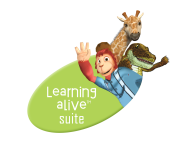 Alive Studios announces the release of Learning alive, its innovative, supplemental reading and math bundled solution for PreK to 3rd Grade. This suite of software is injected with a hefty dose of Augmented Reality, an exciting technology that provides a 3D experience without the glasses. The goal is to have kids proficient in reading and math by the end of the third grade. Currently, 55% of U.S. students are not proficient in reading and math by the end of the 3rd grade.
Alive Studios announces the release of Learning alive, its innovative, supplemental reading and math bundled solution for PreK to 3rd Grade. This suite of software is injected with a hefty dose of Augmented Reality, an exciting technology that provides a 3D experience without the glasses. The goal is to have kids proficient in reading and math by the end of the third grade. Currently, 55% of U.S. students are not proficient in reading and math by the end of the 3rd grade.
The company is actually the first of its kind in the world to use augmented reality in a full year, supplemental educational curriculum. They have been introducing their software solutions across the country in many of the educational conventions and expos. Within a matter of hours, they have the attention of show attendees with their brightly colored booth, trumpeting animal noises and amazing software that enables plain-looking flash cards to jump to life with animated and interactive 3D characters.
“Everywhere we go, the common theme amongst teachers is how to engage students,” states Alive Studios CEO, Cynthia Kaye. “Shortly after seeing our reading and math solutions, and how we use music, sounds, animation, interactivity and the magic of augmented reality, they realize they’ve found their solution for engaging students,” she adds.
The Learning alive Suite, which is now shipping, includes the new Letters alive v3.0, the recently released Math alive, and the interactive digital stories included in Storybooks alive. “Delivering an amazing brand experience is very important to us,” says Kaye. The PreK – 3rd Grade software solutions are infused with 26 lovable characters that draw you into their safari world, and before long, you know each of them by name.
In the midst of all the interactive fun, an independent research study shows kids are learning letter sound fluency and letter naming fluency at a faster pace than those not using the software. “After all the flashy fun of engaging young imaginations, we are primarily focused on getting kids proficient in reading and math by the 3rd grade,” says Kaye.
Augmented Reality Curriculum – Title 1
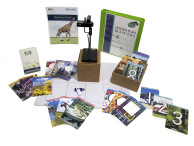 Early childhood educators attending the National Title 1 Conference in Salt Lake City this week will be treated to a hands-on experience of the latest in 3D augmented reality (AR) curriculum.
Early childhood educators attending the National Title 1 Conference in Salt Lake City this week will be treated to a hands-on experience of the latest in 3D augmented reality (AR) curriculum.
Alive Studios has announced that it will launch and demonstrate their newly integrated Learning alive Suite of AR-based learning products that supplement reading and math curriculum for early educators. Administrators and district-grouped educators are encouraged to visit booth 535 early to schedule a hands-on demonstration.
Math alive, a full-year, game-based supplemental math curriculum, is the newest addition to the Learning alive Suite. Math alive uses AR to engage students in 7 essential units of math comprehension. The 3D technology engages children, who say they learn “without even realizing it.” The Lesson Plan Manual is directly mapped to Common Core State Standards for Kindergarten and makes classroom integration seamless. Math alive allows students to interact with some of the same animals from Letters alive, the flagship product from Alive Studios. The combination of reading and math makes the Learning alive Suite comprehensive over subjects and further engages students.
The full Learning alive Suite includes Letters alive, Math alive, and Storybooks alive. Both Letters alive and Math alive feature curriculum guides that make classroom integration effortless with lesson plans, worksheets and activities, enabling full learning integration. Storybooks alive includes captivating, digital, interactive stories that teach children honorable character traits.
39 STATES PIONEERING AUGMENTED REALITY LEARNING
Letters alive is already being used in Pre-school and Kindergarten classes throughout the United States. “We use Letters alive to reinforce what our children are learning in the classroom,” says Raquel Baldwin of Baldwin Academy in Tamarac. “To see the look on their faces when they see the animals come to life is truly amazing. The children seem to be much more engaged and focused on what they’re learning.”
Audra Cervi, K-3 Reading Resource teacher at Audubon Park Elementary in Orlando, agrees. Cervi says the students “love the new flashcards because the letters actually come alive! Children are 100% engaged, watching every movement on the board. They are so excited to learn about the letters and the sounds!”
Audubon Park’s primary Special Education Teacher Mary-Elizabeth Langston says her students benefit from this rich, positive learning experience. “I hear the children throughout the day repeating the sounds they learned. We’re starting to see the difference in how they form sounds and words… there’s a willingness to learn that we had not seen before.”
LETTERS ALIVE:
Letters alive is a supplemental reading curriculum currently in use by educators in 11 countries and in hundreds of classrooms across the United States. Letters alive was designed in alignment with Common Core State Standards for Kindergarten classrooms, as well as early childhood reading within grades 1 – 5 for ESL students, RTI students and students with special needs.
The curriculum gets students excited about reading by using the same mind-blowing, computer-generated augmented reality technology implemented by the Imagineers at Walt Disney World, only in the classroom, where 26 alphabet cards spring to life to help students grasp key concepts in reading.
Each card features an animal that corresponds to a letter in the alphabet, but these are not just simple flash cards or basic animations; These animals pop up in 3-D with no glasses needed, and seem intelligent as they amazingly respond to the questions and sentences that students will build. Even reluctant learners enthusiastically respond to the animals, sounds, and movement. [more]
MATH ALIVE:
Math alive gets students excited about math by helping teachers teach math to early learners in a new and engaging way. Lessons and activities are mapped to Common Core State Standards for Kindergarten. Math alive develops critical learning skills that children need to meet major milestones throughout the school year at Pre-K, Kindergarten and 1st Grade levels. Math alive uses 45 skill-based interactive games and the latest “mind-blowing technology” — Augmented Reality. [more]
STORYBOOKS ALIVE:
Storybooks alive makes reading fun and engaging for children with digital interactive storybooks. They can read the stories themselves or have the program read it to them. Children are able to interact with the pages of the digital book with the same lovable animals that are in Letters alive and Math alive. One character trait is incorporated in each digital story. (i.e., being on time, courage, or kindness) Each story has mini games and activities that are aligned to Common Core State Standards. [more]
ABOUT ALIVE STUDIOS:
Alive Studios is the world’s first augmented reality learning company, dedicated to engaging early learners for success in reading and math. Offering research-driven tools backed by a proven teaching methodology that kids love, Alive Studios delivers Letters alive, Math alive, and Storybooks alive in 11 countries and in classrooms across the United States. More information at www.alivestudiosco.com
JOURNALISTS NOTE:
To receive interviewing contact information for parents, teachers, school, or district administrators, please contact Ian Bryan, 828.713.3310, pr@alivestudiosco.com.
For independent research: http://bit.ly/K-12study
About Learning alive: http://alivestudiosco.com/
Math alive Announced at FETC 2015 Conference
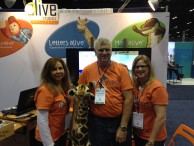 Our next stop on the trade show circuit was the FETC Convention in sunny Orlando, Florida. What a treat to have 60+ degree weather in January!
Our next stop on the trade show circuit was the FETC Convention in sunny Orlando, Florida. What a treat to have 60+ degree weather in January!
We selected FETC to be where we officially announced the newest addition to our educational software solutions, Math alive! On the heels of the successful, Letters alive – our supplemental reading program for PreK to 3rd Graders, comes our solution for early math learners. Like Letters alive, Math alive is infused with an amazing technology known as augmented reality. As expected, attendees who passed by our booth were stopped in their tracks; firstly, by the jungle noises accompanying our 26 animal characters, and secondly, by seeing our characters come alive and jump off the screen!
One of our booth visitors was Barbara, an LAUSD Common Core Math Specialist. She was glued to our booth and full of questions. Seeing so much potential in Math alive for her teachers, she gathered all the information possible to bring back to California.
Our faithful crew ran demos non-stop, which caused the crowd to consistently be 3-4 people deep. (We apologize if you had questions and we were not able to assist to you.) We had all kinds of magic going on and brought out all the stops; From our colorful Converse to Gerdy Giraffe roaming around the booth, we made every attempt to bring well-deserved attention to Math alive. 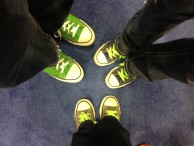 We are on a mission to get children proficient in reading and math by the third grade, and FETC was another great stop on the crusade.
We are on a mission to get children proficient in reading and math by the third grade, and FETC was another great stop on the crusade.
We cannot talk about the FETC Show without mentioning the two lucky winners of our Learning alive Suite! Our educational software bundle for reading and math is valued at $1,295. Jane, of Buncombe County Schools, and Debra, of Port Orange Elementary, had their names drawn from the entries and celebrated the win. Congratulations to both and we look forward to hearing how much your kids love learning with our beloved characters.
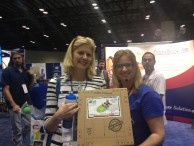
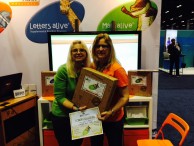
Our next stop is the Title1 Show in Salt Lake City. The crusade marches on!! Yay!!




